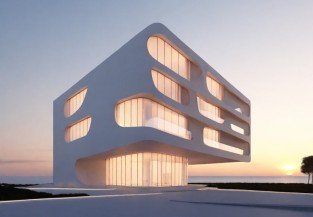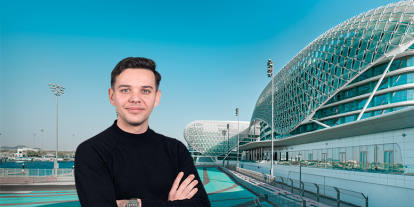Zigurat Global Institute of Technology
Blog / Disruptive Technologies
Brisbane's Urban Forest Tower Aspires to Set the Benchmark for Green Urban Centers
Categories
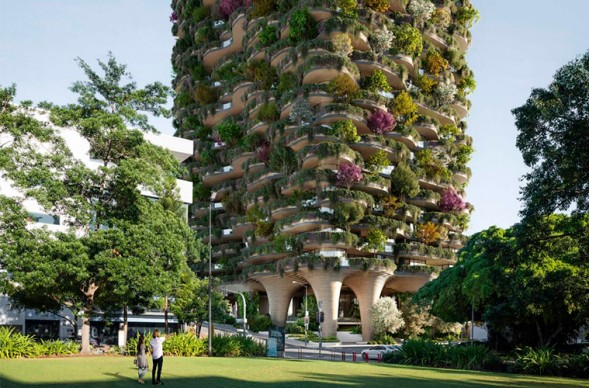
A new wave of transformation is reinventing the cityscape. In densely populated and continuously expanding cities, space is in short supply and making way to green simply doesn’t seem to be in the cards. But adding vegetation vertically to the buildings themselves might just bear fruit.
The United Nations Food and Agriculture Organization has proposed creating up to half a million hectares of new urban forest in 90 cities across 30 countries in Africa and Asia, as the continents with the fastest population growth. Because the truth is pretty simple here: trees are our most efficient ally to absorb carbon dioxide. The hope is that timely action will give the trees time to grow big enough to reduce air temperatures by up to 8 degrees Celsius by 2030. But how to make space for all those trees in the urban landscape? The solution might have been right in front of our eyes: build them vertically.
Urban Forest Tower in Brisbane
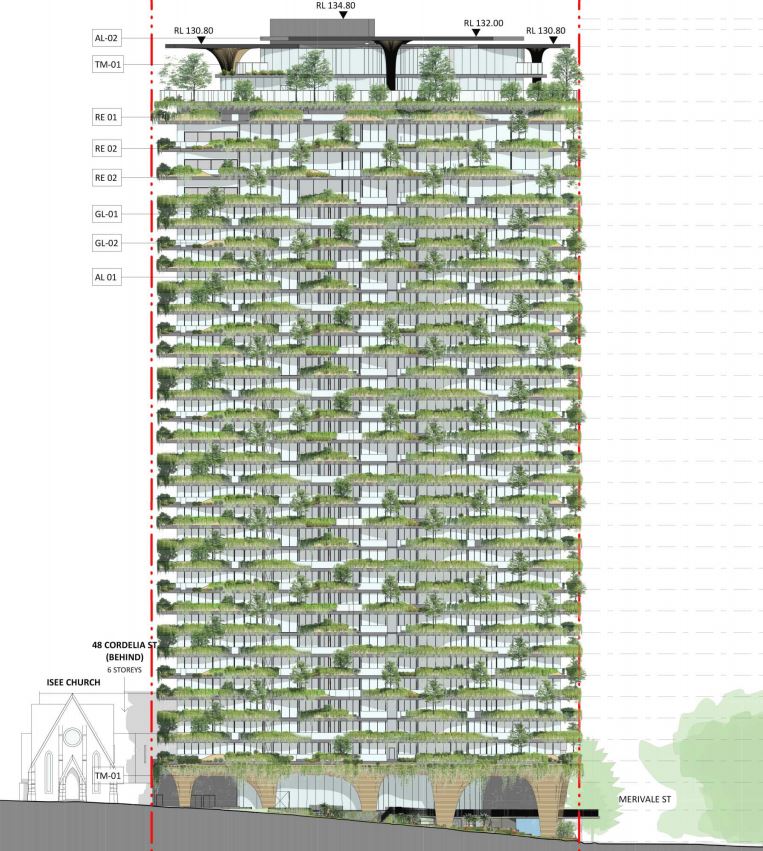
Image: yourneighbourhood.com.au In Brisbane, Australia, architect Koichi Takada has gone out of his way to design this residential building development for Aria Property Group that has become known as the Urban Forest Tower of Brisbane. Both the architect and the developer believe that the building comes to Brisbane in a fortunate time when, unlike other more populated cities, there are means and opportunity to shift the city towards a greener and more humanized approach. Moreover, they hope that this impressive 30-story tower, that by accommodating 1,003 trees and 20,000 plants becomes the world’s greenest residential building, will rise through the ranks to become a global leader in green buildings and sustainability, mentioned in the same breath as Singapore. In fact, the residential tower that occupies 2.750 sq m can show for considerable biodiversity compared to that of the neighboring Musgrave park that has 154 trees over 43,300 sq m.

Backyards in the Sky
Brisbane Urban Forest Tower has more impressive numbers to accompany its aesthetic design. In fact, by expanding the green over various stories, it establishes a green plot ratio of 292%. Meaning that due to the multi-level structure, more space for the green area is created. According to Koichi Takada, this is equivalent to taking about 150 cars off the road each year.
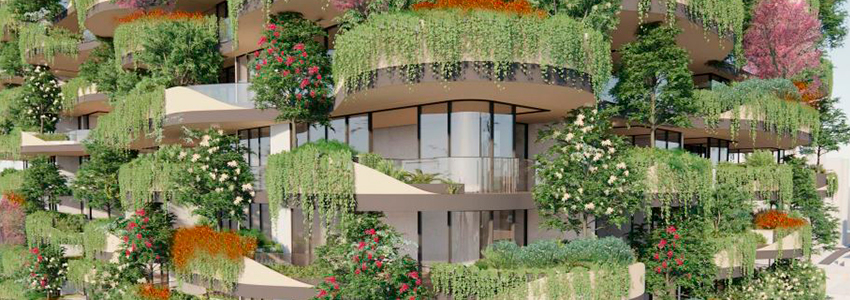
Image: yourneighbourhood.com.au The landscaping will combine indigenous and exotic plants, including tree species which would flower in different seasons. The result will be a striking fusion of the traditional residential gardens in the Brisbane area and lush forests that would produce humidity and oxygen while absorbing carbon dioxide and dust particles.
Reshaping the neighborhood
The development also looks into making upgrades in the whole area of South Brisbane by improving the Glenelg Street where the Urban Forest Tower is located and creating a better connection from the Musgrave Park to the Brisbane River. The urban planners at Urbis and landscape architects Lat27 have proposed a Green Spine masterplan that includes reducing the traffic on Glenelg Street to two lanes. That would permit to expand the footpath, propose landscape design that would also include new trees and lighting and make improvements to the surrounding public spaces.

Image: yourneighbourhood.com.au The ground floor of Urban Forest Tower also extends that Green Spine with an open space of 1,642 sqm that is open to the public 24 hours. Situated under sculptural green columns that support the tower, the space integrates a variety of seating, art, lighting and water features. Among those features are children's play elements and an amphitheater to encourage public activity. Another particular feature is the planned visitor and tourist information center that will provide the local schools, universities and general visitors an ideal spot to engage with the biodiversity of the urban forest and learn more about the building.
A building made to stand out
For the residents, the Urban Forest Tower has many other benefits up its sleeve. In addition to the private terraces of each of the 382 apartments, all residents have access to the rooftop common floors that hold swimming pools and sauna, barbecue and seating area, cinema and workspace room and many lounge areas. All those amenities make the Urban Forest Tower apartments a development with the greatest portion of open space among all apartment developments in Australia. The Brisbane Urban Forest tower has also been rated with 5 green stars by the Green Building Council of Australia for its sustainable solution. So in addition, the unique approach to landscaping, absorbing CO2 and adding to the biodiversity of the area, the residential tower is energy efficient in other ways:
A solar farm is mounted on the roof of the building to reduce the power demand.
The tower is strategically located to minimize summer solar heat gain and take advantage of natural ventilation.
The air conditioning and LED lighting are all high-efficiency to reduce the energy consumption.
Each household has its own energy and water metering system to help them track and control their use.
All stormwater and greywater of the tower will be treated and retained.
To reduce the reliance on cars, the proposal contemplates a fleet of communal use electric vehicles, provision of bike racks, scooter bays and other alternatives.
In conclusion, we can observe that, even if it’s always the people who make the cities, the buildings can contribute to making them a whole lot more liveable.

